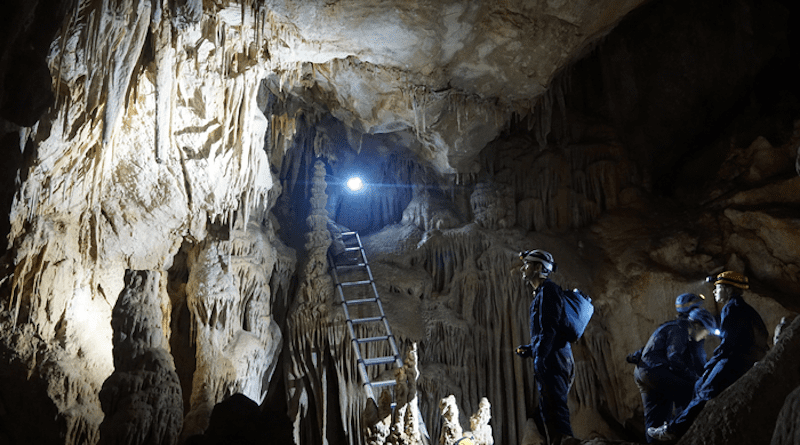Changing Azores High And Drying Iberian Region Linked To Anthropogenic Climate Change
Projected changes in wintertime precipitation make agriculture in the Iberian region some of the most vulnerable in Europe, according to a new study that links the changes to increased anthropogenic greenhouse gases.
These changes in precipitation are tied to a subtropical high-pressure system known as the Azores High that is more often significantly larger in the industrial era (since 1850 CE) than in preindustrial times, according to the paper, Twentieth Century Azores High Expansion Unprecedented in the Last 1200 Years, published in Nature Geoscience. The extremely large Azores Highs, which extend over the eastern subtropical North Atlantic and Europe during winter, result in anomalously dry conditions across the western Mediterranean, including the Iberian Peninsula.
The Azores High “has changed dramatically in the past century,” and “these changes in North Atlantic climate are unprecedented within the last millennium,” according to the paper.
The paper states that the “industrial-era expansion of the Azores High in a warming climate is a result of the anthropogenic increase in atmospheric greenhouse gas concentrations.”
“What we are seeing here with the expansion of the Azores High is bad news for winter rainfall in the Iberian Peninsula. That has severe implications for agriculture and other sectors reliant on water resources,” says paper co-author Caroline Ummenhofer, associate scientist in the Physical Oceanography Department at the Woods Hole Oceanographic Institution (WHOI).
The researchers used state-of-the-art climate model simulations of the last 1200 years to isolate particular effects of volcanic, ozone/aerosols, solar variability, orbital variability, and well-mixed atmospheric greenhouse gas forcings. They found that only simulations with greenhouse gas concentrations included matched the climate record.
Using a set of numerical simulations known as the Last Millennium Ensemble, researchers found that extremely large Azores High areas occurred on average during15 winters in the 20th century compared to roughly 10 winters for all other 100-year periods over the previous millennium. “For the 20th century, this reflects a 50% increase in the frequency of winters with extremely large Azores High that are associated with dry conditions in the Iberian Peninsula – an occurrence rate not seen at any time during the previous 1000 years”, says Ummenhofer. In addition, researchers found that the most recent 25-year period available (1980-2005) averaged 6.5 winters with extremely large Azores High areas, while other 25 year periods since 1850 averaged 2.6 such winters. This makes it 2-3 times more likely now to experience a winter with an extremely large Azores High, compared to what it was between 1850 and 1980.
In addition to using climate model simulations, the research also relied on observations from the stalagmite carbon isotope record of hydroclimate from Buraca Gloriosa cave, Portugal.
“Paleoclimate archives, including speleothems, have provided evidence of unique hydroclimate conditions in Iberia during the last millennium, with relatively dry conditions in the Medieval Climate Anomaly, wet conditions in the Little Ice Age, and a trend toward dry conditions since about 1850 CE. Prior to this study, we hypothesized that the hydroclimate shifts were related to changes in dynamics of the Azores High system. The modeling aspect of this study corroborates that these unique hydroclimate conditions were likely related to the size, intensity, and mean location of the Azores High system,” says Alan Wanamaker, professor in the Department of Geological and Atmospheric Sciences at Iowa State University.
“Although our previous findings using speleothems hinted at large changes in hydroclimate over the last 1000 years, the ability to diagnose the most likely causes of these shifts is exciting. Recent drying in Portugal is primarily related to greenhouse gas forcing causing an expansion of the Azores High, whereas earlier changes were largely related to the non-stationary behavior and the relative intensity of the Azores High system.”
“Our work is exciting because it uses observations, ensemble modelling, and proxy methods to characterize climate trends,” lead author Nathaniel Cresswell-Clay says. Cresswell-Clay was a guest investigator at WHOI at the time of the research; he is currently a graduate student in atmospheric sciences at the University of Washington. “We leveraged advantages of each data type to provide new insights into how the North Atlantic climate is changing.”

